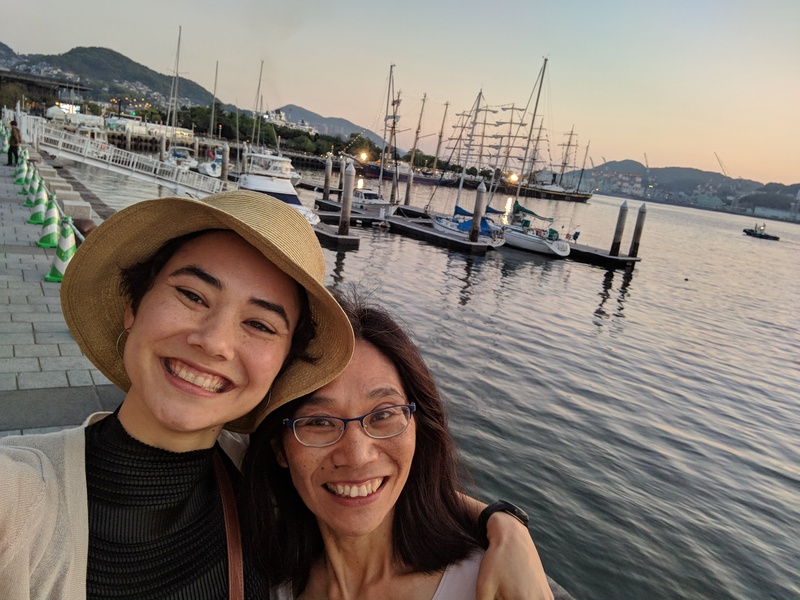My mother is Japanese and my father is American. I am half-Japanese. Ha-fu. Some people dispute this term. They call mixed-race people ‘doubles’, to reflect that fact that both ethnicities exist at once. I do not identify as ‘double’. I identify as American. I know nothing else. My Japanese half is a hazy cloud of Japanese TV shows, the smell of tatami and fish, and a smattering of random words, all of which were slowly fading from memory. The older I became, the more empty-space filled the Japanese half of me. So, I moved to Japan.
After moving here, I realize that being ha-fu in Japan comes with certain pre-conceived notions. The first notion is that ethnicity is linked to culture. Therefore, ha-fu individuals are, theoretically, more connected to Japanese society than those without Japanese blood. “Bullshit,” my American half would say. The magic of blood does little to help me learn Japanese or pick up Japanese habits. Bowing is still uncomfortable for me. I can’t sit on the floor easily. And I speak way too loud.
The second, and more common response I get is “why didn’t your mother teach you Japanese?.” People will often say “sabishii!” (sad) after I’ve told them that my mother speaks Japanese, but I cannot speak Japanese. In those moments, I don’t know what to say.
As a kid, my mom was different than the other cookie-cutter suburban moms. To name a few abnormal events — In the second grade, my mother chased me to the school bus stop, demanding I come back and brush my teeth, as I had gotten into the unhealthy habit of sneaking out of the house without brushing my teeth. Every year after our birthday parties my mother would wash the pink disposable plastic plates to use next year. Once, my mother cut my hair into a bowl cut and I cried for 2 days straight. My mother would put newspaper in our drawers for years, even though we lived in a high desert. Tossing food was taboo; she made me eat my cereal-mush that had sat in milk for 2 hrs. To this day, she saves Mcdonald’s napkins and ketchup packets and has a drawer full of old hotel shampoo. She was, and still is, an expert at nagging. But, it was only after I moved to Japan that I realized these aren’t just weird quirks, but also Japanese habits.
At the time my mom’s strange rules and habits were frustrating. Infuriating, even. My sisters and I would say to each other “It’s just mommy, you know?” I guess, if we lived in California or Oregon, I wouldn’t be writing this essay. But I grew up in Idaho where the Asian American community was extremely small. We didn’t grow up with a true sense of what it means to be Asian American. It was only after coming to Japan that I began to understand what it means to be truly, Asian American.
I still can’t speak Japanese very well. I still don’t feel comfortable bowing. I still talk too loudly. But I’ve expanded my understanding of culture to not only language and mannerisms, but to values. My mom instilled in my the value of frugality, of taking care of the things your own, and to not waste what you have. She showed me that taking care of yourself is essential and that taking care of others is at the root of community. So my mom didn’t teach me Japanese, but she taught me many values of Japan. My Japanese-half will never be fully empty like I had originally thought. I am the melding of two cultures. In the fusion of culture, some things are lost, but some things are also created. I like to think that I have a unique view of culture and acceptance due to my upbringing. It didn’t take coming to Japan to know my mother was amazing. But it did take coming to Japan to realize that I too, inexplicably carry some values of of Japan within me.
So, little by little, I am learning to accept and mold my Japanese half with memories, connections, and understanding. I will never blame my mother for not teaching me Japanese. It was wrong for me to ever entertain the thought. She gave me her version of Japan and my father gave me America. It’s my turn to meld the two into something new, unique, and inexplicably me.
© 2018 Lila Klopfenstein




